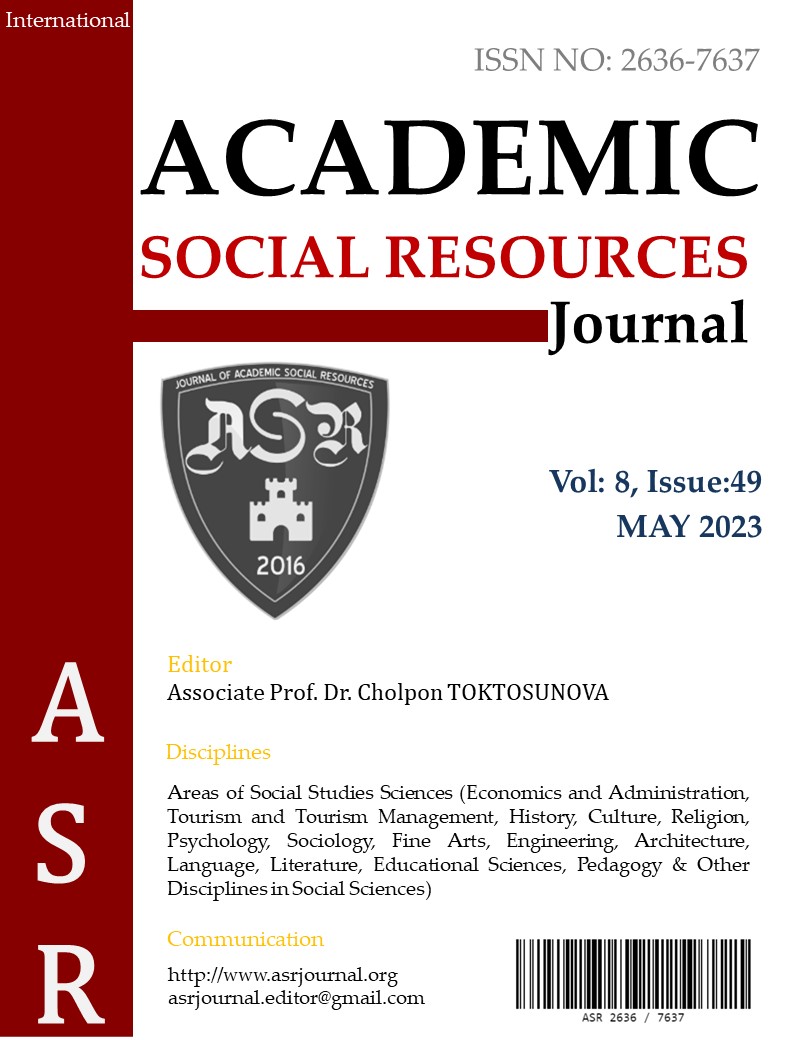Ankara Etnoğrafya Müzesi’nin Ulus Kimliğinin İnşasındaki Yeri ve Müze Müdürü Dr. Hâmit Zübeyr (Koşay) (1897-1984)
Author :
Abstract
Bu çalışmada Türkiye’de devlet eliyle açılan ilk müze olan Ankara Etnoğrafya Müzesi, çeşitli yönleriyle incelenmiştir. Burası Anadolu’nun Türk-İslam dönemine ait kültür ve sanat eserlerinin sergilenmesi amacı ile kurulmuştur. Ulusçuluğa yönelik reformlarla yakından ilişkilidir. Cumhurbaşkanı Gazi Mustafa Kemal Atatürk, Türkiye’ye ilk resmi ziyareti yapan Afganistan’ın devlet başkanı, Amanullah Han’ı bu müzede ağırlamıştır (1928). Binanın projesi, Birinci Ulusal Mimari Akımı’nın temsilcilerinden biri olan Arif Hikmet’e (Koyunoğlu) (1893-1982) aittir. 1938’de Atatürk’ün vefatından sonra, naaşının muhafaza edildiği mekân olması, buraya ayrı bir anlam yüklemiştir.
- Meşrutiyet (1908) sonrasında ulusçuluk akımının güçlenmesi, etnoğrafya, etnoloji ve antropoloji gibi sosyal bilimlerin önemini arttırmıştı. Bu süreçte, etnoğrafya ile ilgili makaleler dergilerde yayımlandı ve Mekteb-i Mülkiye’de bir ders olarak okutulmaya başlandı. Cumhuriyet Türkiye’sinin kültür politikası belirlenirken, bunu yönlendirecek kültürel kurumlar da açıldı. Bunlardan biri olan Ankara Etnoğrafya Müzesi’nin kurulmasında, sosyolog ve siyasetçi Ziya Gökalp (1876-1924) ile İstanbul Darülfünunu’nda, etnoğrafya ve Macarca dersleri veren Macar Türkolog, Gyúla Mészáros’un da payı vardı.
Müzenin ilk müdürü, aslen Rusya Türklerinden olan bilim insanı, Dr. Hâmit Zübeyr (Koşay) (1897, Ufa-1984, Ankara) idi. Türkiye’deki eğitiminden sonra, Macaristan’da Türkoloji ve dil bilim alanında doktora yapmıştı. Ulus kimliğinin oluşturulma sürecinde, müzecilik, kütüphanecilik, arkeoloji, filoloji, etnoğrafya ve folklor sahalarındaki bilimsel çalışmaları ile tanındı. Mustafa Kemal Atatürk’ün değer verdiği bilginlerden biriydi ve bazı kültürel inkılapların hayata geçirilmesinde etkisi oldu.
Bu makalenin amacı, Türk ulusal kimliğinin kuruluşunda Ankara Etnoğrafya Müzesi’nin önemini ortaya koymak ve Dr. Hâmit Zübeyr’in oynamış olduğu rolü analiz etmektir.
Keywords
Abstract
This study examines various aspects of the Ankara Ethnographic Museum, the first museum opened by the state in Türkiye. It was established with the aim of exhibiting works of culture and art belonging to the Turkish-Islamic period of Anatolia. It was closely associated with reforms towards nationalism. It was in this museum that President Gazi Mustafa Kemal Atatürk, hosted Afghanistan's President Amanullah Khan on his first official visit to Türkiye (1928). The building was designed by Arif Hikmet (Koyunoğlu) (1893-1982), one of the representatives of the First National Architectural Movement. After the death of Atatürk in 1938, it was the space where his body was temporarily retained, bestowing it a special meaning.
The strengthening of the nationalist movement after the Second Constitutional Monarchy (1908) increased the importance of social sciences such as ethnography, ethnology and anthropology. In this process, articles on ethnography were published in scientific journals and started to be taught as a course at Mekteb-i Mülkiye (School of Political Sciences). The cultural policy of the Turkish Republic was determined and cultural institutions were opened to guide this policy. The sociologist and politician Ziya Gökalp (1876-1924) and the Hungarian Turkologist Gyúla Mészáros, who taught ethnography and Hungarian at the Istanbul Darülfünunu (Istanbul University), had a hand in the establishment of the Ankara Ethnographic Museum.
The first director of the museum was Dr. Hâmit Zübeyr (Koşay) (1897, Ufa-1984, Ankara), a scientist originally from Russian Turks. After his education in Türkiye, he had earned a doctorate in Turkology and linguistics in Hungary. He was known for his scientific studies in the fields of museology, librarianship, archaeology, philology, ethnography and folklore in the process of creating a national identity. He was one of the scholars Mustafa Kemal valued and had an impact on the implementation of certain cultural reforms.
The aim of this article is to highlight the importance of Ankara Ethnographic Museum in the establishment of Turkish national identity and to analyze the role played by Dr. Hâmit Zübeyr in this process.
